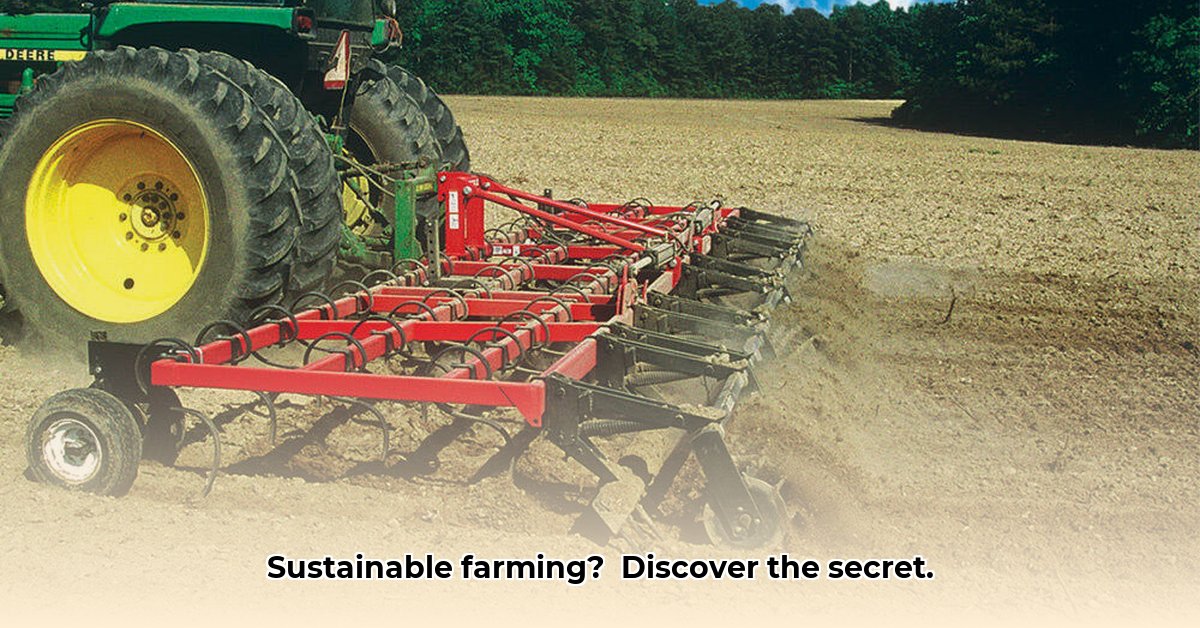
Choosing the right equipment is crucial for efficient and sustainable farming. For small-scale farmers, versatile tools like "do-all" tractor implements offer significant advantages by combining several essential functions into a single machine. This guide helps you navigate the selection and use of these implements, ensuring you choose the best option for your operation. For more information on different tractor types, check out this helpful guide on tractor types.
Understanding Do-All Tractor Implements
A do-all tractor implement is a multi-functional tool designed to streamline seedbed preparation. Instead of multiple passes with different machines, it combines tasks like clod crushing (breaking up soil clumps), vegetation management (controlling weeds and crop residue), and leveling (creating a uniform surface). This saves time, fuel, and labor, all vital for sustainable agriculture. However, the variety of available models makes choosing the right one challenging.
Do-all implements vary in size, suitable for farms of different scales. Smaller, lighter-duty models work well for smaller acreage, while larger, heavier-duty models are better for extensive farms. The materials used also influence durability and cost. Heavier steel constructions are more durable but pricier. Consider your budget and long-term needs when making a choice. Do you anticipate expanding your farm in the coming years? This might influence your implement selection.
Choosing the Right Do-All Implement
Selecting the perfect do-all implement requires careful consideration of several factors. Let's break down a step-by-step process:
Assess Your Farm Size: How many acres do you farm? Larger farms need more powerful implements. Smaller operations may find smaller, lighter models more appropriate.
Analyze Your Soil Type: Soil type impacts implement selection. Heavy clay soils demand implements designed to handle their density and resistance. Sandy loam requires less robust machinery. Understanding your soil characteristics is crucial. How would you describe the texture and drainage of your soil?
Consider Your Crop Type: Different crops have specific seedbed preparation needs. Some are more sensitive to clod size than others. The choice of implement should ensure the correct level of soil refinement for your chosen crop. What crops do you primarily cultivate?
Define Your Budget: Consider the initial cost, anticipated lifespan, maintenance, and potential repair expenses. High-quality implements may have lower long-term costs due to increased durability. What is your realistic budget for this investment?
Evaluate Your Maintenance Capabilities: Assess your mechanical skills and access to repair services. Some implements require more maintenance than others. If you lack mechanical aptitude, a simpler, more robust model might be preferable. Are you comfortable performing basic maintenance tasks?
Here's a summary table:
| Factor | Considerations |
|---|---|
| Farm Size | Acreage, field size, shape; consider future expansion plans. |
| Soil Type | Clay, sandy loam, silt; consider drainage and compaction. |
| Crop Type | Planting requirements, sensitivity to clod size and weed pressure. |
| Budget | Initial cost, lifespan, maintenance, repair expenses. |
| Maintenance | Your skills, access to parts and service. |
Using and Maintaining Your Do-All Implement
Proper use and diligent maintenance are essential for maximizing the lifespan of your implement. Always consult the manufacturer's manual for detailed instructions.
Step-by-Step Guide:
Pre-Operation Inspection: Inspect for wear, damage, or loose parts before each use. Pay close attention to moving parts and connections.
Adjustments: Adjust settings based on soil conditions and tillage intensity (depth, width).
Safe Operation: Operate at the recommended speed and depth. Avoid overloading.
Post-Operation Cleaning: Remove soil, debris, and plant material to prevent corrosion.
Lubrication: Lubricate moving parts as recommended.
Storage: Store in a dry, protected area to prevent damage.
Regular maintenance prevents costly breakdowns and downtime. Neglecting this is a short-sighted approach.
Long-Term Considerations: Sustainability and Soil Health
Your implement choice has long-term effects. Consider these factors:
Soil Health: Minimal-tillage techniques can improve soil structure and water retention, potentially increasing yields. However, results vary based on soil type and usage. Ongoing research explores these impacts further.
Environmental Impact: Durable implements reduce the need for frequent replacements, minimizing environmental impact.
Operational Costs: Efficient use and proper maintenance directly influence overall operational costs. Preventative maintenance lowers repair costs and prevents downtime.
Choosing a do-all implement is a significant investment. Thorough research, careful consideration of your needs, and responsible use contribute to sustainable and profitable farming. The best choice aligns with your practices, budget, and long-term goals.